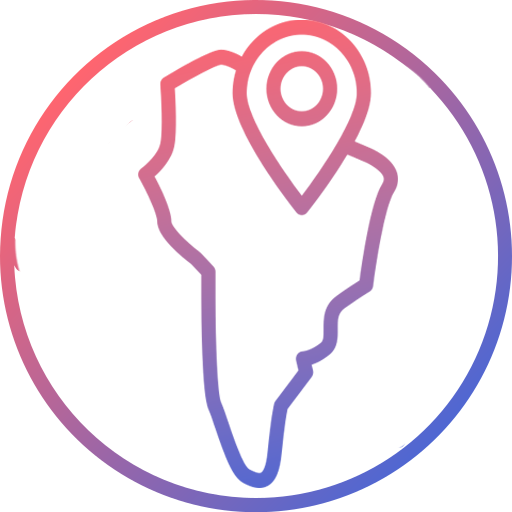Frequently Asked Questions
Why Some eSIM Networks Work Better in Certain Countries
Explore why some eSIM networks offer better performance in certain countries. Learn about factors like local partnerships, network infrastructure, and compatibility to make an informed choice for your travels.
Not all eSIM networks are created equal, and their performance can vary significantly depending on the country. When planning your travels, it’s essential to understand why some eSIM networks work better in certain locations. Factors such as local carrier partnerships, network infrastructure, and regional technology can all play a role in determining your eSIM experience. This guide dives into these factors, helping you choose the right network for a seamless and reliable connection while traveling.
1. Key Factors That Affect eSIM Network Performance
A. Local Carrier Partnerships
eSIM providers often partner with local mobile carriers to provide network coverage in different countries. The quality of these partnerships directly impacts your connectivity:
- Strong partnerships with leading carriers ensure better coverage, speed, and reliability.
- Weak or limited partnerships can result in spotty service or slower speeds.
Example:
- In Japan, eSIMs that partner with NTT Docomo or SoftBank provide excellent coverage.
- In India, partnerships with Airtel or Jio are crucial for widespread connectivity.
B. Network Infrastructure
The state of a country’s mobile network infrastructure also plays a significant role:
- Developed Countries: Robust infrastructure often means fast and reliable 4G or 5G connectivity.
- Developing Countries: Limited infrastructure may lead to slower speeds or less consistent coverage, especially in rural areas.
C. Spectrum Compatibility
Different countries use varying frequency bands for mobile networks. Your eSIM must be compatible with these bands to work effectively.
- Example:
- In the US, networks often rely on bands such as 2, 4, and 66.
- In Europe, bands 3, 7, and 20 are more commonly used.
D. Geographic Challenges
Certain regions pose geographic challenges that can affect network performance:
- Urban Areas: Networks typically perform well due to a high density of cell towers.
- Rural Areas: Connectivity can be limited, as fewer towers are available.
- Mountainous Regions: Natural barriers may interfere with signal strength.
2. Why Some eSIMs Excel in Specific Countries
A. Tailored Regional Plans
Some eSIM providers specialize in specific regions, offering plans optimized for those locations. These plans often include:
- Access to multiple carriers for better coverage.
- Plans tailored to popular destinations, ensuring seamless connectivity.
Example:
- Airalo Asia Plan: Designed for optimal performance across multiple Asian countries.
- Holafly Europe Plan: Unlimited data in 32 European countries.
B. Priority Access to Local Networks
Certain eSIM providers negotiate priority access with local carriers, giving their users faster speeds and better signal quality.
C. Support for Emerging Technologies
In countries with advanced networks, such as South Korea or Singapore, eSIMs that support 5G can deliver faster speeds and lower latency.
3. Common Issues with eSIM Networks in Certain Countries
A. Inconsistent Coverage
- Some eSIMs may only connect to one local carrier, which could lead to gaps in coverage in areas where that carrier is weak.
B. Slower Speeds in Remote Areas
- Even with good partnerships, eSIMs may struggle to deliver fast internet in rural or mountainous regions.
C. Activation Challenges
- In countries with limited internet infrastructure, activating an eSIM upon arrival may be difficult if you haven’t preloaded the profile.
D. Roaming Restrictions
- Some local carriers impose restrictions on eSIM roaming, limiting their performance or usability in certain regions.
4. How to Choose the Best eSIM for a Specific Country
Step 1: Research Local Carriers and Coverage
- Identify the top mobile carriers in your destination and check if the eSIM provider partners with them.
Step 2: Check Reviews and Feedback
- Look for user reviews and testimonials about the provider’s performance in the country you’re visiting.
Step 3: Evaluate Plan Options
- Choose a plan designed for your destination to ensure optimized coverage.
Step 4: Test Before You Travel
- Activate and test your eSIM at home, if possible, to troubleshoot any potential issues.
5. Recommended eSIM Providers by Region
A. Asia
- Airalo: Regional plans that partner with top carriers like NTT Docomo (Japan) and Jio (India).
- Nomad: Flexible plans with strong coverage in Southeast Asia.
B. Europe
- Holafly: Unlimited data plans with reliable connectivity across 32 countries.
- Airalo Europe: Affordable options with widespread coverage.
C. North America
- Nomad: Reliable connectivity in the US, Canada, and Mexico.
- Ubigi: Pay-as-you-go plans for travelers who need occasional internet access.
D. Global Coverage
- Airalo: Offers country-specific and regional plans for over 190 destinations.
- Ubigi: Great for worldwide connectivity with flexible data options.
6. Example Scenario: Choosing an eSIM for a Trip to South Korea
Scenario:
A traveler plans a 1-week trip to South Korea and needs reliable internet for navigation and social media.
Solution:
- The traveler selects an Airalo Korea Plan for $15 (2GB, valid for 7 days).
- Airalo partners with SK Telecom, South Korea’s leading carrier, ensuring excellent coverage and high-speed internet.
- The eSIM is activated before departure, and the traveler enjoys uninterrupted connectivity during their trip.
Outcome:
The traveler experiences smooth browsing, seamless navigation, and consistent network performance throughout South Korea.
Frequently Asked Questions
Why do eSIM networks perform differently in various countries?
Performance depends on factors like local carrier partnerships, network infrastructure, and geographic challenges.
Traveling to a specific country? Use our widget to find eSIMs with the best local network coverage and enjoy seamless connectivity wherever you go.
Create new eSIM
Popular Destinations

Europe
Switzerland
